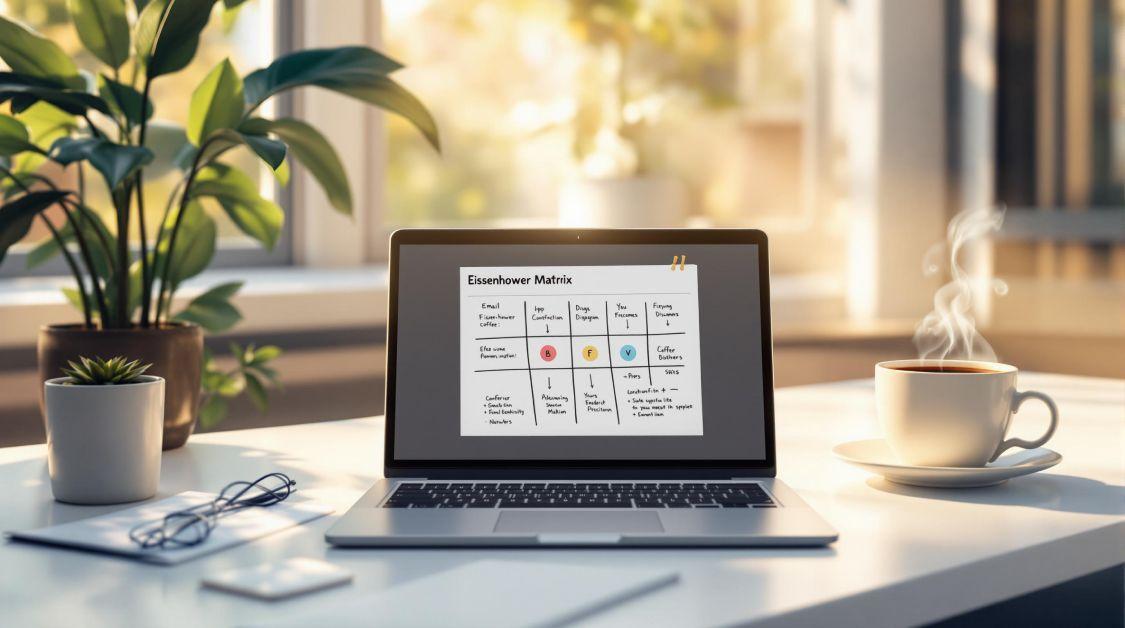The skill of chipping in golf is often undervalued,yet it is crucial for enhancing a player’s overall performance on the course. Successful chipping demands a careful combination of technique, mental focus, and an understanding of course conditions. By grasping the basic principles of club selection, swing mechanics, and weight distribution, golfers can improve their ability to execute chips that are both accurate and effective. This article explores essential techniques necessary for mastering the nuances of chipping, providing players with the tools to refine their short game and lower their scores. Aimed at both beginners and seasoned golfers, it seeks to deepen the understanding of the strategic elements of chipping, ultimately fostering greater confidence and consistency on the greens.
Club Selection for chipping Success
Choosing the right club for chipping is a vital decision that can significantly impact the shot’s outcome. The selected club influences the ball’s trajectory, distance, and spin, making it essential for golfers to comprehend the characteristics of different clubs. **Wedges** are typically preferred for chipping due to their design, which allows for higher loft and better control. Within this category, the **pitching wedge**, **sand wedge**, and **lob wedge** each offer distinct advantages based on the shot requirements and course conditions.
To enhance performance, golfers should consider several factors when selecting a club for their chip shots:
- Ball Lie: Determining whether the ball is on grass, bare ground, or in a bunker can guide club selection.
- Distance to the Hole: Longer chips may benefit from lower lofted clubs, while shorter chips could be better executed with higher lofted options.
- Green Conditions: Firm greens may require less loft to avoid overshooting, while softer greens might need higher loft for a gentler landing.
In addition to these factors, understanding the club’s face angle and bounce can further improve chipping effectiveness. **Bounce** refers to the angle between the leading edge and the lowest point of the sole,affecting how the club interacts with the ground. For example, a club with a higher bounce is beneficial on softer surfaces, allowing for smoother contact and less digging. Conversely, a lower bounce is more suitable for tight lies. By mastering these elements, golfers can create a flexible chipping strategy adaptable to various course situations.
Swing Path and Angle for consistent ball Flight
Achieving consistent ball flight during chipping hinges on understanding the nuances of yoru swing path and angle. The trajectory of the clubhead throughout the swing is crucial in determining how the ball reacts upon contact. To maintain an effective swing path,golfers should focus on keeping the clubhead moving in a straight line toward the target,avoiding unnecessary lateral movements that can lead to errant shots. This alignment not only enhances accuracy but also creates a predictable ball flight pattern essential for short-game success.
Maintaining the correct angle of the clubface at impact is another vital aspect of the chipping process. **A square clubface** at the moment of contact ensures efficient energy transfer,providing the desired lift and roll.Golfers can achieve a proper angle by approaching the ball with a slightly descending swing path, which helps prevent thin or fat shots often caused by incorrect angles. Additionally, ensuring that your hands are slightly ahead of the ball at impact can enhance control over the shot and improve landing predictability.
| Key Factors | Effects on Ball Flight |
|---|---|
| Straight Swing Path | Increased accuracy and consistency |
| Square Clubface | Improved lift and roll |
| Hands Ahead at Impact | Enhanced control and shot predictability |
Practicing these principles diligently will enhance your chipping technique and lead to more effective short-game performance. Remember that every golfer’s swing is unique, and subtle adjustments may be necessary to align with individual strengths and preferences. Through focused practice and a solid understanding of swing path and angle, mastering golf chipping is achievable.
Weight Distribution and Stance in Chipping
Effective chipping starts with a solid understanding of weight distribution and stance, as these factors significantly affect shot accuracy and consistency. To achieve optimal balance, a golfer should adopt a slightly open stance with feet shoulder-width apart. This stance allows for better alignment with the target line and facilitates a more natural swing path. Ideally, weight should be distributed toward the front foot—around 60-70%—which positions the body favorably for striking the ball cleanly. Maintaining a stable base throughout the swing minimizes unnecessary movement, enhancing precision.
Along with weight distribution, the positioning of the knees and hips is crucial for chipping success. proper knee flex lowers the golfer’s center of gravity,promoting a more grounded stance. The hips should remain stable during the swing, allowing the arms and club to move fluidly without excessive body rotation. This combination fosters a consistent swing and encourages effective interaction between the clubface and the ball, providing better control over trajectory and spin.
To illustrate the ideal stance and weight distribution for chipping, consider the following table:
| Component | Recommendation |
|---|---|
| Stance | Slightly open, shoulder-width apart |
| Weight Distribution | 60-70% on front foot |
| Knee Flex | Moderate flex for stability |
| Hip Position | Stable, minimal rotation during swing |
By mastering these foundational elements of weight distribution and stance, golfers can significantly improve their chipping performance. A holistic approach—combining sound physical positioning with focused practice—will yield better results around the greens and elevate the player’s overall short-game effectiveness.
Grip Technique for Chipping Control
Perfecting the grip during chipping can greatly impact a golfer’s control and precision, leading to improved performance on the course. A proper grip optimizes the connection between the hands and club, facilitating the necessary feel for shorter shots. To achieve this, golfers should focus on the following aspects:
- Grip Pressure: Finding the right grip pressure is essential. A light yet secure grip allows for better wrist action, enabling a smoother swing.
- Grip Placement: Positioning the hands on the club is crucial. Placing the hands slightly ahead of the ball encourages a downward strike, vital for effective chipping.
- Finger and Palm Alignment: Ensure that the fingers wrap around the grip, with palms facing each other. This alignment promotes stability and minimizes unwanted movement during the swing.
Golfers should also explore different grip styles to find the one that best suits their comfort and control. The conventional overlap grip often provides the most stability and consistency; however,the interlock grip may be more suitable for those with smaller hands. Practicing both can help identify the optimal grip style. Below is a brief comparison of grip types:
| Grip Type | Advantages | Ideal For |
|---|---|---|
| Overlap | Stability and control | Wider hands, average to larger grips |
| Interlock | Comfort and reduced hand movement | smaller hands, beginners |
Consistent practice focusing on grip technique can significantly enhance chipping abilities. Incorporating grip drills into regular practice sessions can establish muscle memory, ensuring consistent submission during actual play. Techniques such as chip shots from varying lies and distances while maintaining the correct grip can further solidify this essential skill. Improving grip technique ultimately translates into better chipping performance, fostering greater confidence on the greens.
Green Reading for Chipping Success
Understanding the contours of the green is crucial for effective chipping. As a golfer approaches the green, assessing the landscape provides vital information that influences shot execution. Start by identifying **gravity slopes**—areas where the green tilts downward toward the hole. Pay close attention to the **high and low points** on the green to anticipate how the ball will react after landing. Recognizing these subtle shifts allows for better judgment in selecting the appropriate club and determining the necessary force.
Additionally, evaluating the **green’s surface texture** significantly contributes to chipping success. A smooth surface may allow for a faster roll compared to a bumpy texture, which may snag the ball and alter it’s trajectory. Factors such as **moisture levels** and **grass length** also play a critical role. to facilitate better decision-making,consider the following elements:
- Wind Direction: Analyze wind effects before executing a shot,as it can substantially alter ball flight.
- Distance to the Hole: Mapping out the path to the hole enhances focus on the necessary speed and angle of the chip.
- Surrounding Obstacles: Identify any bunkers or hazards that could interfere with the chip’s outcome.
Incorporating these insights into practice sessions will refine a golfer’s ability to read the greens effectively. Various training aids, such as slope boards or yardage finders, can be beneficial in enhancing one’s green-reading skills. Establishing a routine for analyzing the green will improve not only technique but also confidence in chipping. As golfers become proficient in interpreting green contours,their overall game will undoubtedly advance,complemented by the finesse of well-executed chip shots.
Mastering the art of golf chipping is a nuanced process that requires both theoretical understanding and practical application.by adhering to the essential techniques discussed in this article—such as proper grip, stance, and swing mechanics—golfers can significantly enhance their short game performance.Rigorous practice, combined with an informed approach to club selection and shot execution, can lead to ample improvements in overall game efficiency. Moreover, the interplay between technique and mental composure highlights the importance of psychological readiness in achieving consistent results. As golfers continue to refine their chipping skills, it is indeed crucial to engage in reflective practice and seek feedback, fostering ongoing growth in this vital aspect of the game. Ultimately, the commitment to mastering chipping will not only elevate an individual’s short game but also deepen their appreciation for the complexities and subtleties inherent in golf as a sport.

## Meta Title
Unlocking the Secrets of golf Chipping | Techniques to Elevate Your Game
## meta Description
Discover essential golf chipping techniques to enhance your skills. Learn about club selection, swing mechanics, and tips to improve your short game.
—
## understanding Golf Chipping: The Basics
Golf chipping is a crucial skill that can substantially impact your overall game.Unlike full swings, chipping involves shorter, more controlled movements. Mastering this aspect of the game ensures you can recover strokes and minimize your score.
### What is Golf Chipping?
Chipping refers to a short shot played from around the greens, typically using a lofted club. The goal is to elevate the ball in the air briefly before it lands and rolls toward the hole.
### Key Benefits of Mastering Chipping
– **Improved Score**: effective chipping can save valuable strokes on the course.
– **Enhanced Control**: mastering chipping gives you better control over your ball’s distance and trajectory.
– **Increased Confidence**: A solid chipping game builds confidence, especially in pressure situations.
—
## Essential Techniques for Effective Chipping
### 1. Club Selection
Choosing the right club is fundamental in chipping. Here are some common options:
| Club Type | Best Used for |
|————–|————————————-|
| Pitching Wedge | High, soft chips over obstacles |
| Sand Wedge | Bunker shots and shorter chips |
| 9-Iron | Lower chips that run more |
| 8-Iron | Longer chips that require more roll |
– **Tip**: Consider the distance to the pin and the type of surface. Softer surfaces may need higher lofted clubs.
### 2.Stance and Setup
– **Feet**: Place your feet shoulder-width apart.
– **Weight Distribution**: Position about 60% of your weight on your front foot.
– **Ball Position**: Place the ball back in your stance, roughly centered or even slightly back of center.
### 3. Swing Mechanics
– **Grip**: use a relaxed grip with your thumbs pointing down the shaft.
– **Takeaway**: Start your swing with a one-piece takeaway, moving your arms and body in unison.
– **Follow Through**: Ensure the follow-through mirrors the backswing, maintaining a consistent rhythm.
### 4. distance Control
– **Practice**: Use various practice routines to develop a feel for distance.
– **drills**: Perform drills that involve hitting to specific targets at varying distances.
—
## Practical Tips for Better Chipping
### Consistency is Key
- **Routine**: Establish a pre-shot routine to promote consistency.
### Visualization
– **Imagine the Shot**: Before addressing the ball, visualize the trajectory and destination.
### Mental Focus
– **Stay Composed**: Like putting, focus and calmness are crucial during chipping.
### Utilize technology
– **Analyze Your Swing**: Use apps or devices to study your swing mechanics and identify areas for improvement.
—
## Case Studies: Learning from the Pros
**Case Study 1: Phil Mickelson’s Short Game Mastery**
Phil Mickelson is widely regarded as one of the best chippers in the game. His technique combines creative shot-making with solid fundamentals. By observing his mechanics and shot selection, golfers can glean valuable insights.
### Key Takeaways:
- **Variety in Shots**: Try different lies and angles.
– **Adaptability**: Adjust your approach based on course conditions.
**Case Study 2: Jordan Spieth’s Pressure Plays**
Jordan spieth often showcases remarkable chipping skills under pressure,notably during major tournaments.
### Techniques:
– **short Game Focus**: During practice, he dedicates ample time to chipping, emphasizing game-like scenarios.
—
## Firsthand Experience: Personal Chipping Journey
Many golfers recount their challenges and breakthroughs in mastering chipping. For instance,transitioning from a full-swing mentality to a more controlled approach can often be daunting. Here’s a brief narrative:
“I used to dread chipping around the greens, frequently enough fearing chunky hits or blading the ball. Though, after focusing on my weight distribution and consistent stance, I noticed significant improvement.I now feel much more pleasant approaching chip shots, wich has ultimately lowered my scores.”
—
## Conclusion: Practice Makes Perfect
Chipping is a skill that evolves through practice, observation, and patience.by incorporating the techniques discussed and learning from expert case studies, golfers can unlock the secrets to effective chipping, leading to a more rewarding and prosperous golfing experience.
—
## Additional Resources
– [Golf Chipping Drills](https://golflessonschannel.com/chipping-drills)
– [Understanding Loft Angles](https://golflessonschannel.com/understanding-loft)
– [Courses for Advanced Chipping techniques](https://golflessonschannel.com/advanced-chipping-techniques)
—
Incorporating these insights and practices will help elevate your chipping game and, ultimately, your entire golf performance. Remember, every stroke counts!





